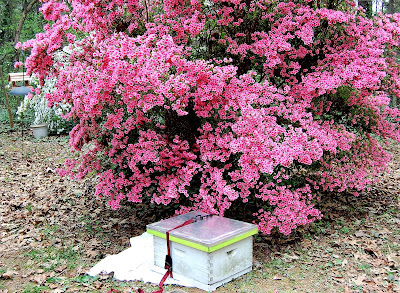
After the I- 75 freeway was finished the interstate trucks and cars switched and rarely used Highway 41 anymore. Slowly the motel started to decline due to lack of business. We drove by the motel a few weeks ago and were surprised to see that the motel had totally disappeared and, instead, there was a vast open area. Even new construction had stopped, apparently because of the economic downturn. I hope that the economy will pick up, but in the meantime it is nice to have an uninterrupted panoramic view of Kennesaw Mountain.

I did some research and found out that the City of Kennesaw had decided that the acreage occupied by the Smith Motel should be “redeveloped” into at least 250,000 square feet of retail businesses, even though a couple of miles away there is a shopping center with department stores and chain stores. They declared that the motel site should be razed because the area was “blighted” (read: without another strip mall.) But I am sure that there are enough visionary and creative architects out there who could have designed a beautiful area comprising green condos, a park and several little stores while retaining part of the vintage motel.

I find it interesting that in this country many buildings and houses are destroyed rather than being restored or preserved. It is a very different mindset from other countries. How many American tourists would like to visit quaint little towns in Germany or Italy if their mayors had the same attitude as the Kennesaw’s mayor? Would they fly over the ocean to look at another strip mall? I saw a blog by an American woman who just moved to France and she thought that the reason there were so many open spaces in the country side was because World War I had killed too many men - many men were killed, but this is a result of strong building regulations and historic preservation.
Here is a picture of buildings in Lucca , Italy, that were allowed to grow old. I took this picture a few years ago, but I bet if you go there this summer, they will still be there not a strip mall.

Thinking about this, I looked on the Internet and found Mr. Rypkema’s Heritage Strategies Blog which has many good posts concerning historic preservation. For example he says that “Now France has as big a case of economic chaos as we do. Their economy shrunk last year the most since World War II and their unemployment is expected to reach nearly 11%. So, of course, President Sarkozy had to introduce his own economic stimulus plan. But here's a big piece of his approach - committing 100 million extra Euros per year ($130 million) for the restoration of historic monuments in France for the next 4 years. So about 1.5% of his stimulus package is going toward heritage conservation.” You can read his interesting posts by clicking here .
This is a picture of the empty motel site looking toward Highway 41 -

In conclusion I’ll quote from Mr. Rypkema's Heritage Strategies Blog again, who is talking about another building as an example but makes the point much better than I could: “We all diligently recycle our aluminum cans because we’re told it’s good for the environment. Here is a typical North America commercial building – 25 feet wide and 120 feet deep. Let’s say that today we tear down one small building like this. We have now wiped out the entire environmental benefit from the last 1,344,000 aluminum cans that were recycled. We’ve not only wasted an historic building, we’ve wasted months of diligent recycling. And that calculation only considers the impact on the landfill, not any of the other sustainable development calculations like embodied energy.”
This is the corner where the popular (and good) Mexican Restaurant stood -

As long as we elect officials who are primarily interested in short term profits resulting in much suburban sprawl, many of our buildings won't be rehabilitated and revitalized. They won't have a chance at getting "old" and be part of some heritage conservation program of future generations.


























































